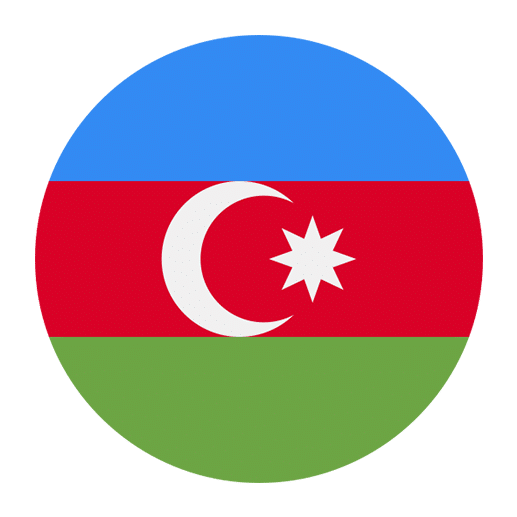Azerbaijani, also known as Azeri, is the official language of Azerbaijan and is spoken by millions in the surrounding regions. Like any language, Azerbaijani has its own unique ways of expressing emotions and feelings. Whether you’re planning to travel to Azerbaijan, communicate with Azerbaijani speakers, or simply expand your linguistic repertoire, learning how to convey your feelings can be incredibly rewarding.
The Basics: Vocabulary for Emotions
To start expressing emotions in Azerbaijani, you’ll first need to familiarize yourself with some basic vocabulary. Here’s a list of common emotions and their Azerbaijani counterparts:
– Happy: Xoşbəxt
– Sad: Kədərli
– Angry: Qəzəbli
– Love: Sevgi
– Fear: Qorxu
– Surprise: Təəccüb
– Disgust: İyrənmək
– Excitement: Həyəcan
– Shame: Utanc
– Pride: Qürur
These words are useful building blocks for more complex sentences and expressions.
Contextual Usage
Learning individual words is just the beginning. To truly express emotions in Azerbaijani, you’ll need to understand how to use these words in context. Let’s look at some examples:
– I am happy: Mən xoşbəxtəm.
– She is sad: O kədərlidir.
– He is angry: O qəzəblidir.
– I love you: Mən səni sevirəm.
– They are scared: Onlar qorxurlar.
Notice that the verb “to be” (olmaq) often gets conjugated to fit the subject.
Nuances of Emotions
Different cultures have unique ways of expressing emotions, and Azerbaijani is no exception. Understanding these nuances can help you communicate more effectively.
Expressions of Joy
Joy can be expressed in various ways depending on the intensity of the emotion:
– I am very happy: Mən çox xoşbəxtəm.
– This makes me happy: Bu məni xoşbəxt edir.
– I am delighted: Mən məmnunam.
Expressions of Sadness
Sadness also has its shades:
– I am very sad: Mən çox kədərliyəm.
– This is sad: Bu kədərlidir.
– I feel miserable: Mən bədbəxt hiss edirəm.
Expressing Anger
Anger can be conveyed in different intensities:
– I am very angry: Mən çox qəzəbliyəm.
– This makes me angry: Bu məni qəzəbləndirir.
– I am furious: Mən küskünəm.
Idiomatic Expressions
Idioms are an essential part of any language. They add color and depth to everyday conversation. Here are some Azerbaijani idiomatic expressions related to emotions:
Expressions of Happiness
– To be on cloud nine: Göylərdə olmaq
– To smile from ear to ear: Qulaqdan qulağa gülmək
Expressions of Sadness
– To have a heavy heart: Ağır ürək
– To be down in the dumps: Üzgün olmaq
Expressions of Anger
– To see red: Qırmızı görmək
– To blow a fuse: Əsəb partlatmaq
Non-Verbal Cues
While words are important, non-verbal cues also play a significant role in expressing emotions. In Azerbaijani culture, gestures, facial expressions, and body language can complement verbal communication.
Facial Expressions
A smile can indicate happiness, while a frown can show sadness or disappointment. Raised eyebrows might signal surprise, and narrowed eyes can indicate suspicion or anger.
Gestures
Hand movements are often used to emphasize feelings. For example, placing a hand on the heart can signify sincerity or deep emotion. Waving hands can show excitement or urgency.
Body Language
Posture and movement also convey emotions. Standing tall can indicate confidence or pride, while slumping may show sadness or defeat. Quick, agitated movements can signal anger or frustration.
Cultural Sensitivities
Understanding cultural sensitivities is crucial when expressing emotions in any language. In Azerbaijani culture, certain emotions might be expressed more subtly than in Western cultures.
Respect and Formality
Respect and formality are highly valued in Azerbaijani culture. When expressing emotions, especially with elders or in formal settings, it’s important to maintain a respectful tone. For example, while you might openly express frustration with a peer, you would be more reserved when speaking to an elder.
Public Displays of Emotion
Public displays of strong emotions, such as anger or affection, are generally less common in Azerbaijani culture compared to some Western cultures. While it’s perfectly acceptable to express joy or sorrow, it’s often done in a more controlled manner.
Practical Application
To effectively express emotions in Azerbaijani, practice is key. Here are some practical tips:
Role-Playing
Engage in role-playing exercises with a language partner or tutor. Practice expressing different emotions in various scenarios, such as greeting a friend, discussing a problem, or celebrating good news.
Language Exchange
Participate in language exchange programs where you can practice with native Azerbaijani speakers. This real-world practice can help you become more comfortable and fluent in expressing your emotions.
Journaling
Keep a journal in Azerbaijani where you write about your daily experiences and emotions. This can help you internalize vocabulary and improve your ability to express complex feelings.
Advanced Expressions
As you become more proficient, you can explore more advanced ways to express emotions in Azerbaijani.
Subtle Nuances
Learn to express subtle nuances of emotion. For example, instead of just saying you’re happy, you might say:
– I am content: Mən məmnunam.
– I am elated: Mən sevincliyəm.
– I am overjoyed: Mən çox xoşbəxtəm.
Complex Emotions
Explore words and phrases for more complex emotions, such as:
– Nostalgia: Həsrət
– Bittersweet: Acıqlı-şirinli
– Melancholy: Melanxoliya
Conclusion
Mastering the art of expressing emotions in Azerbaijani not only enhances your communication skills but also deepens your connection with the culture. By learning the vocabulary, understanding contextual usage, and practicing regularly, you can convey your feelings effectively and authentically. Whether you’re sharing joy, expressing sorrow, or conveying anger, your ability to communicate emotions in Azerbaijani will enrich your language learning journey and foster meaningful connections with Azerbaijani speakers.

